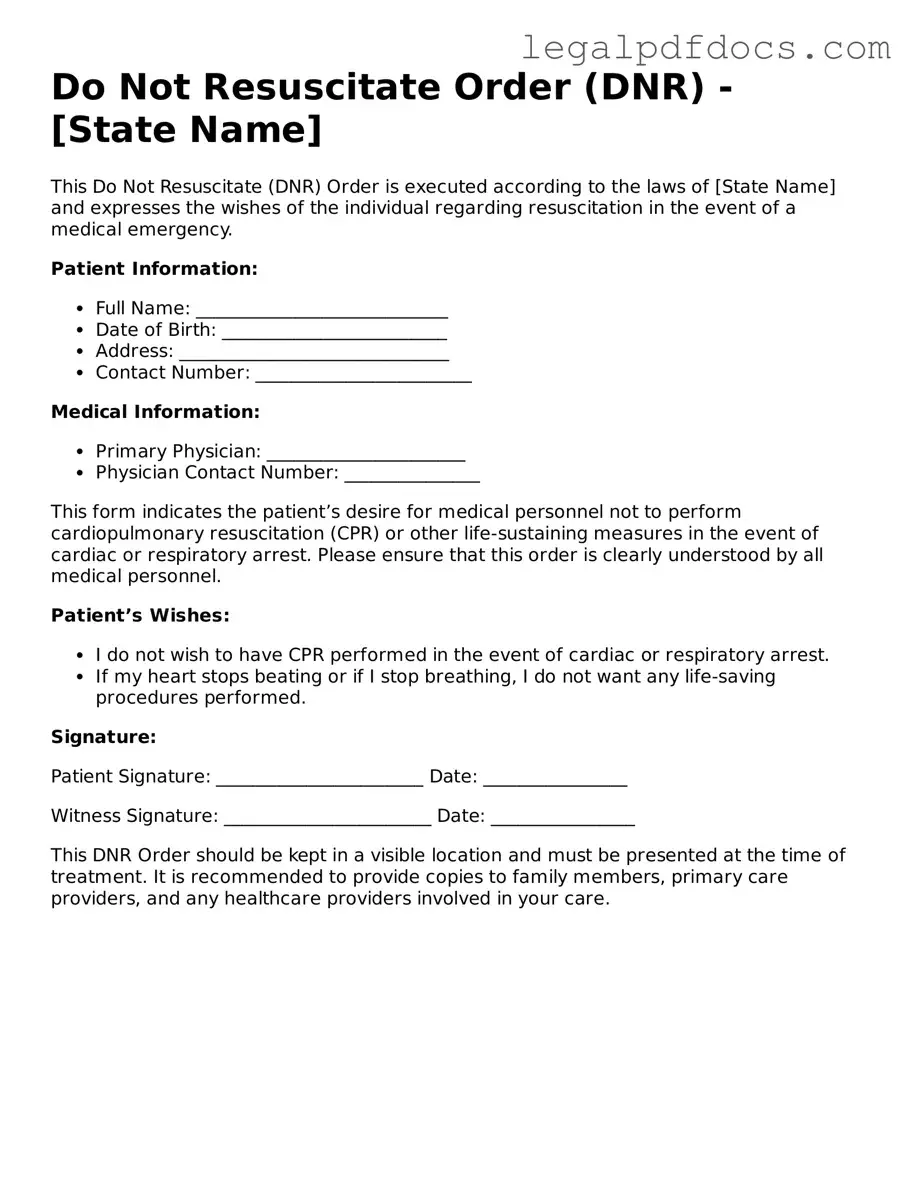A Do Not Resuscitate Order (DNR) form is an important legal document that allows individuals to express their wishes regarding medical treatment in the event of a life-threatening situation. This form is typically used by patients who have a terminal illness or are facing a medical condition that significantly impacts their quality of life. By completing a DNR, individuals can specify that they do not wish to receive cardiopulmonary resuscitation (CPR) or other life-saving measures if their heart stops or they stop breathing. The DNR form must be signed by a qualified healthcare provider and is often accompanied by the patient's signature or that of a legally authorized representative. It is crucial for the form to be easily accessible to medical personnel, ensuring that the patient's wishes are honored during emergencies. Additionally, the DNR form may vary by state, and it is essential for individuals to understand the specific requirements and implications in their jurisdiction. Overall, the DNR serves as a vital tool for patients to communicate their preferences regarding end-of-life care, fostering discussions between patients, families, and healthcare providers about treatment options and personal values.
